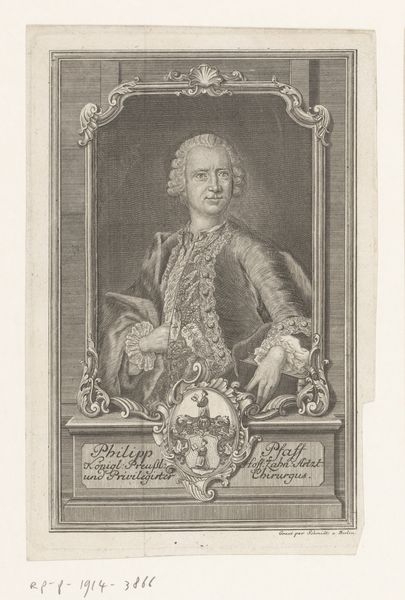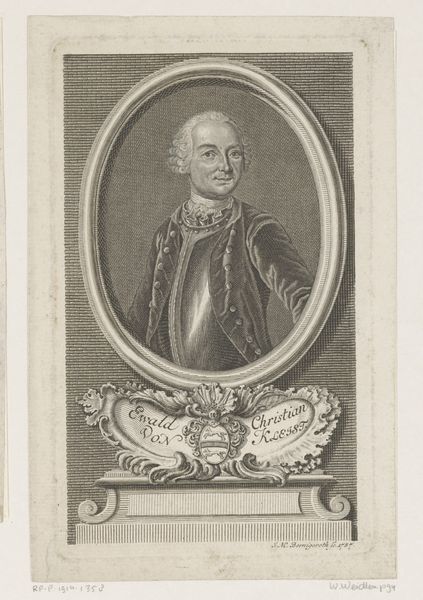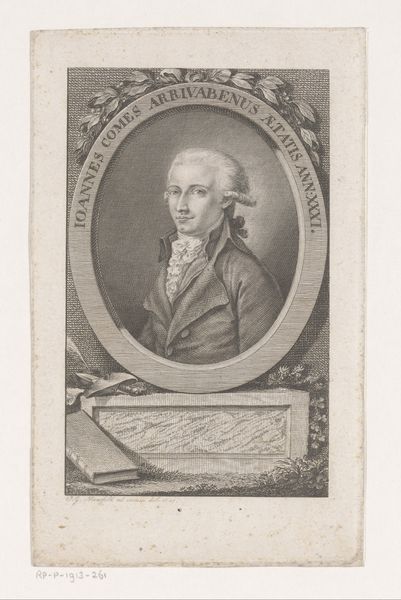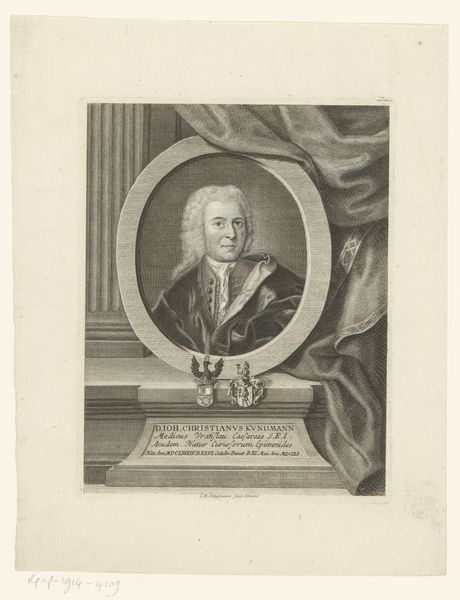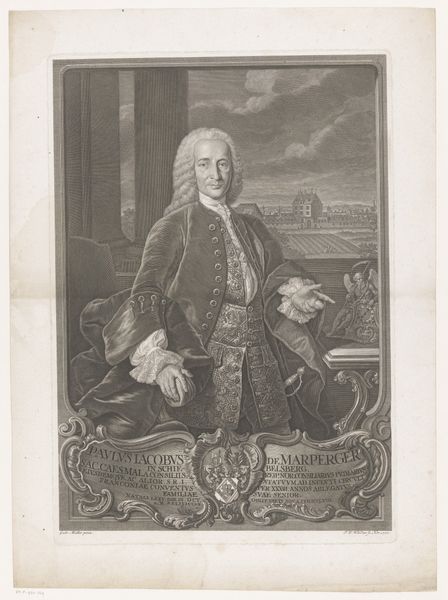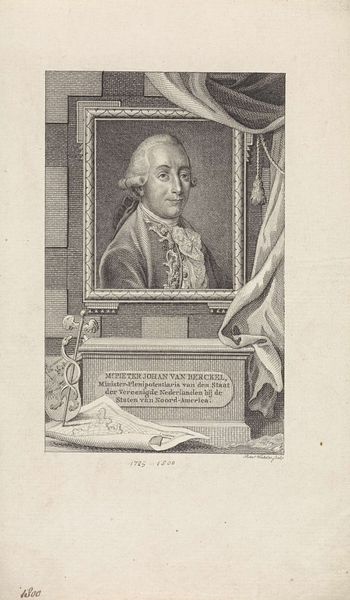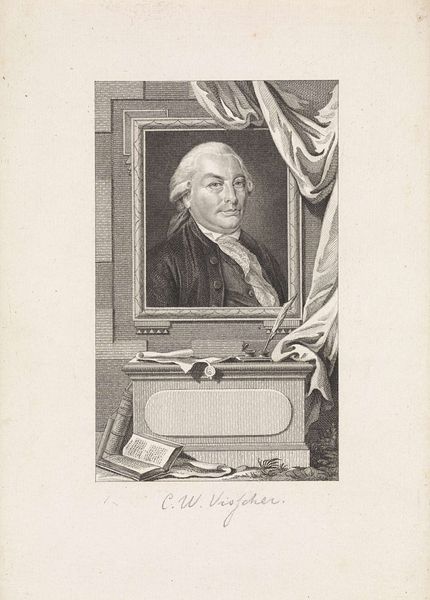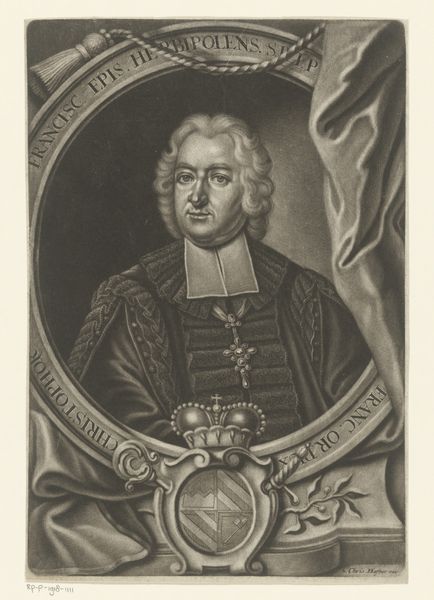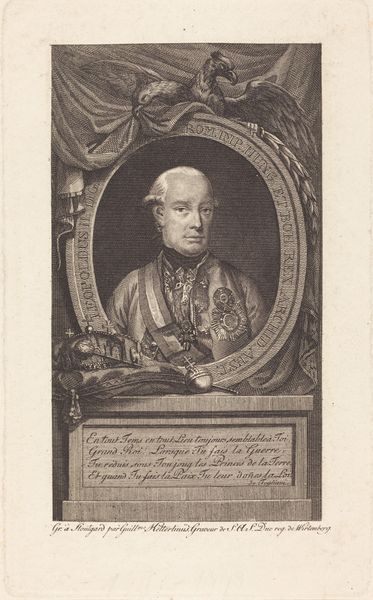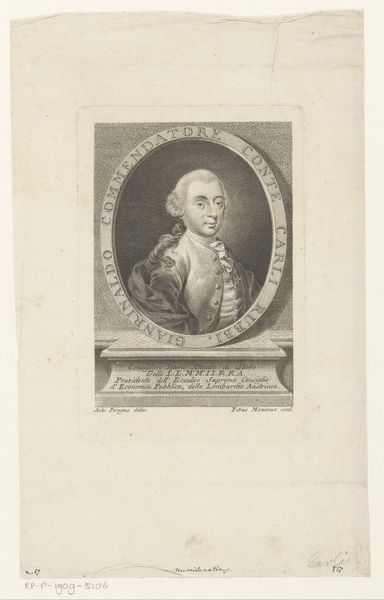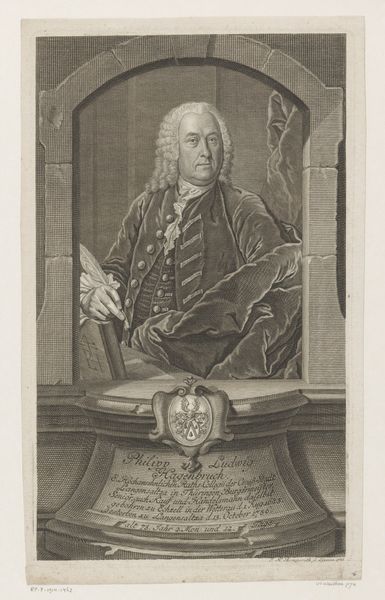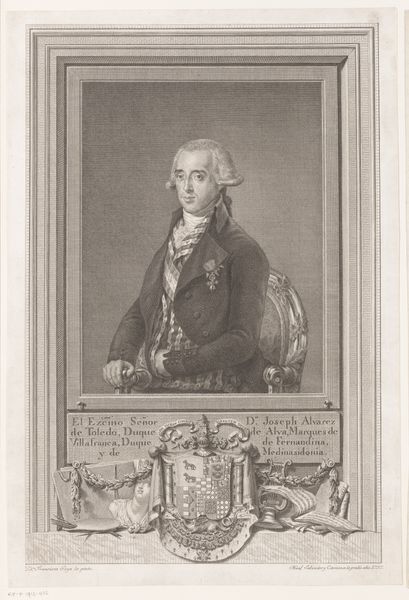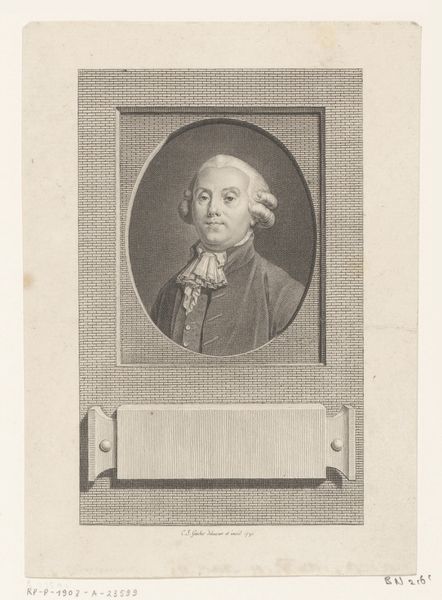
drawing, graphite, engraving
#
portrait
#
drawing
#
baroque
#
charcoal drawing
#
line
#
graphite
#
history-painting
#
academic-art
#
charcoal
#
graphite
#
engraving
Dimensions: height 430 mm, width 330 mm
Copyright: Rijks Museum: Open Domain
Curator: Here we have "Portret van Pietro Antonio Locatelli", dating from somewhere between 1729 and 1750. The artist behind it is Cornelis Troost. Editor: My initial thought is the strong contrasts create such a dramatic feel. It has a theatrical flair that I associate with the Baroque, though it feels very precise due to its being a drawing. Curator: Yes, let's delve deeper. Locatelli, as you may know, was a celebrated Italian violinist and composer. Think about the rise of the virtuoso, and how displaying such a figure becomes intertwined with power, artistry, and even burgeoning nationalism. What stories about artists were acceptable or ignored, then, in this context? Editor: Absolutely. It’s all carefully constructed, from the materials—the very graphite and charcoal laid down on paper—to how those choices evoke certain aesthetics of the period. Engravings also helped disseminate such imagery; the materiality facilitated wider reach, shaping Locatelli's image and legacy. It reminds us of the labour involved, the hands that shaped this representation. Curator: Indeed. And consider the gendered context; who had access to portraiture, who commissioned such works? Whose stories were valued and told versus erased or misrepresented through this medium? Look how this is also representative of power structures outside of art too. Editor: Notice the score next to Locatelli: here's material evidence of labour and craft alongside class. It’s interesting to consider access, and how that influences its perceived cultural value across socioeconomic lines, and how different it is to observe today via digital rendering. Curator: Right. Today, Locatelli might be viewed through multiple lenses; how gender and national identity played within his own self-image but perhaps even more, what might be revealed by looking at the historical silences about other less privileged, unrecognized figures that contributed in making art. Editor: Well, considering how these materials still speak volumes to us, it gives us some solid ideas as to why this remains fascinating even now.
Comments
No comments
Be the first to comment and join the conversation on the ultimate creative platform.
